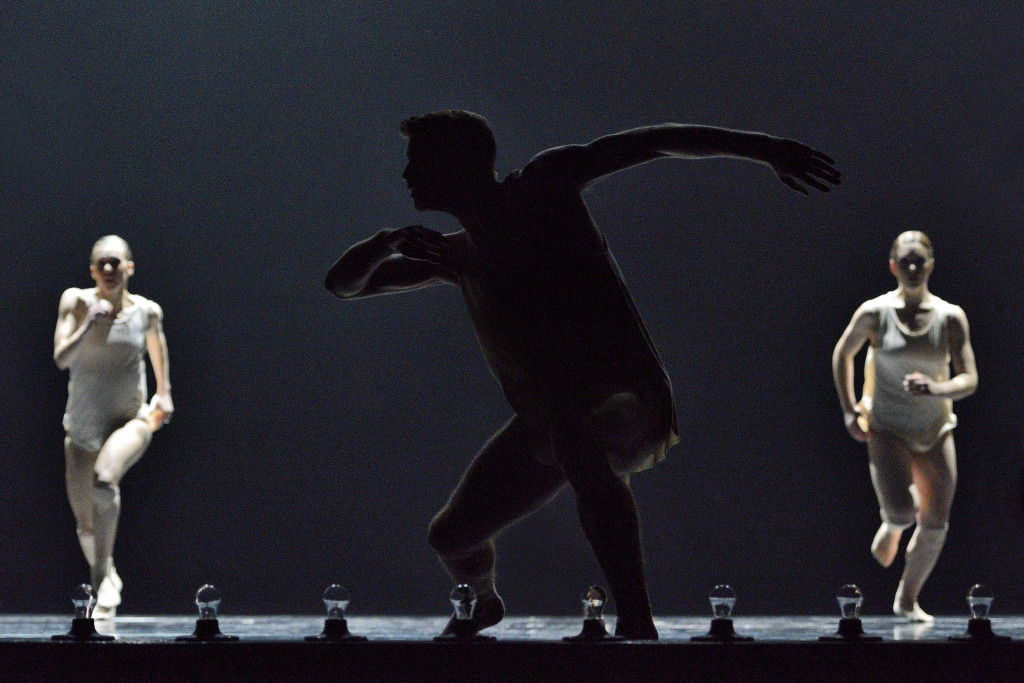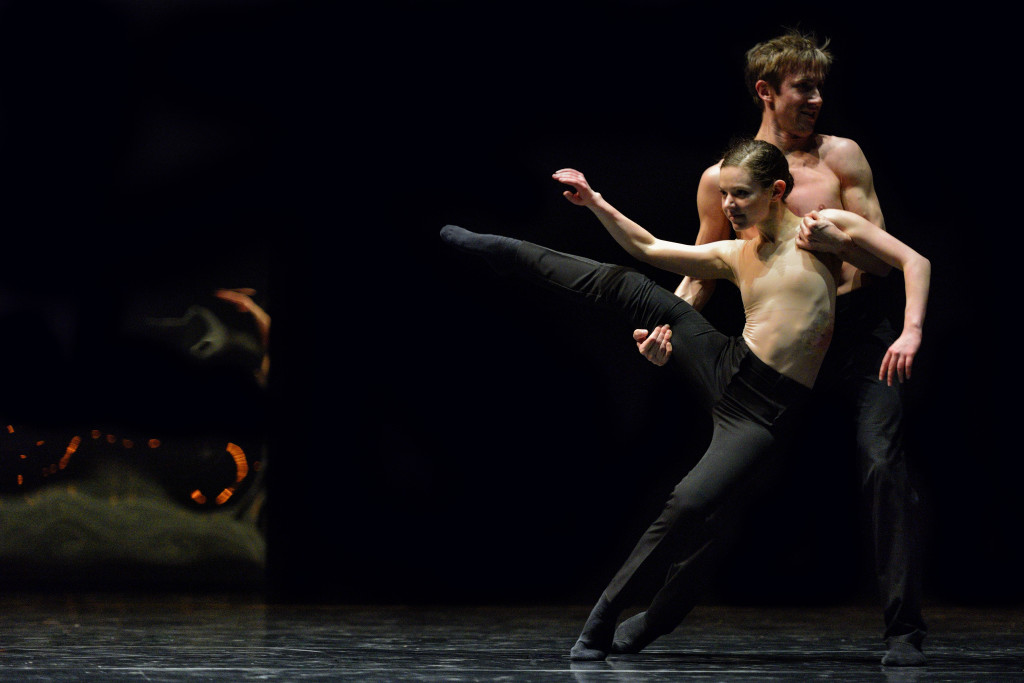
Medhi Walerski’s choreography has always embodied Ballet BC’s forward thinking, genre bending, adventurous ways. With “Program 2” he nudges his 21 dancers into creative formations that make for unforgettably stunning, retina burning, visuals. The show was staged at the Queen Elizabeth Theatre for three nights in March, as part of Ballet BC’s 30th Anniversary year and it did not fall short of representing all the feats Ballet BC has racked up in those marvellous 30 years.
When Walerski’s dancers move together in a group, they become a living breathing entity that is in perfect synchronicity with its elements and the music. The first part of the show is an extension of Walerski’s previous Ballet BC showcase, “Prelude”. In “Prelude” we see how society guides, influences and sometimes cripples the individual. The dance starts out slowly with the dancers wearing black trousers and nude tops creating geometric shapes that imply order and structure in a society. One dancer gets singled out to denote the Individual. The rest of the dancers then dance in a large, long drop of fluid around the Individual, moulding him when he is impressionable and disciplining him when he resists. The Individual’s struggles to conform are full of angst and the choreography is full of yearning and stretching to convey it. The large group of dancers, aka Society, often blocks the Individual’s path of volition, sometimes in a straight, rigid line, and at others by engulfing him and drowning his mobility. Still the Individual never stops pushing the boundaries, with the bottomless energies of his body, to see where they lie. The accompanying music has a soft intensity that translates the Individual’s sub-conscious love-hate relationship with societal influences accurately, and adds another dimension to this antagonistic dynamic. The music’s fusion of classical and contemporary is always soulful and full of emotion.
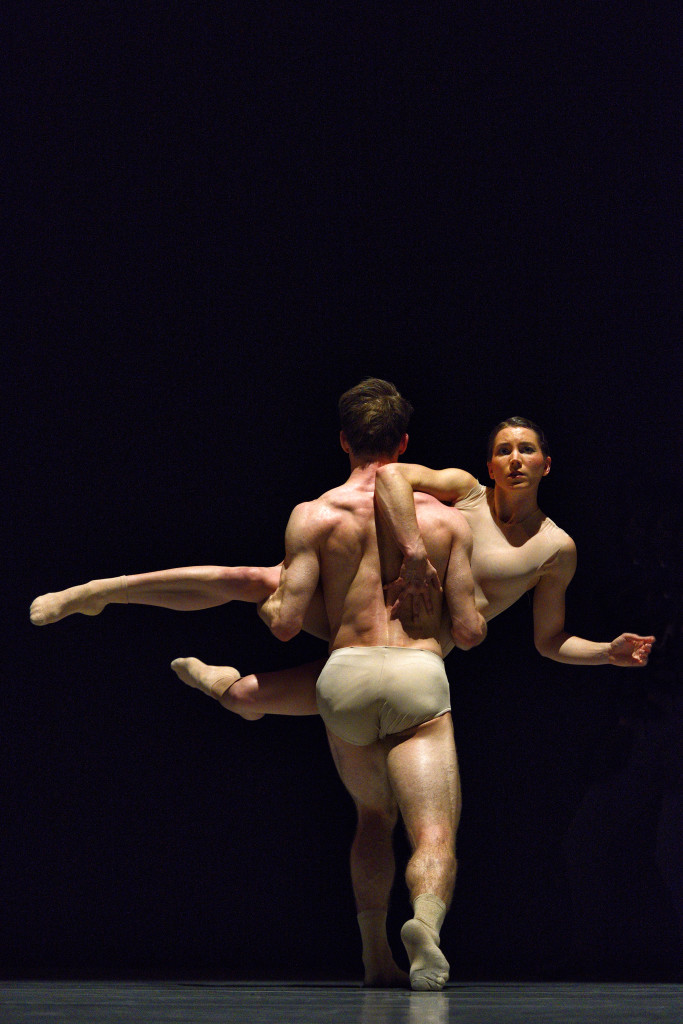
The Individual then meets another Individual- a Woman. Together they navigate the uncertain waters of companionship and courtship. Now they are dressed completely in nude clothing as they become entirely vulnerable to each other. The choreography becomes more contemporary and intimate. We get beautiful duets where the two dancers react off of each other’s musculature in graceful and patient poses. Fists and stomps are replaced by pointed toes and fingers. Society continues to intermittently exert its influence on the couple, surrounding them like the rays of the sun sometimes, swaying around them like the tentacles of an anemone at another point. The latter picture made my heart skip a beat, so gorgeous was its creativity. The Woman eventually leaves the Male Individual and causes him to fall into a spiral of grief and self-destruction. As a result, the Male Individual dives into a heartbreakingly raw solo that defies the rules of the human body and incites raucous applause from the audience.
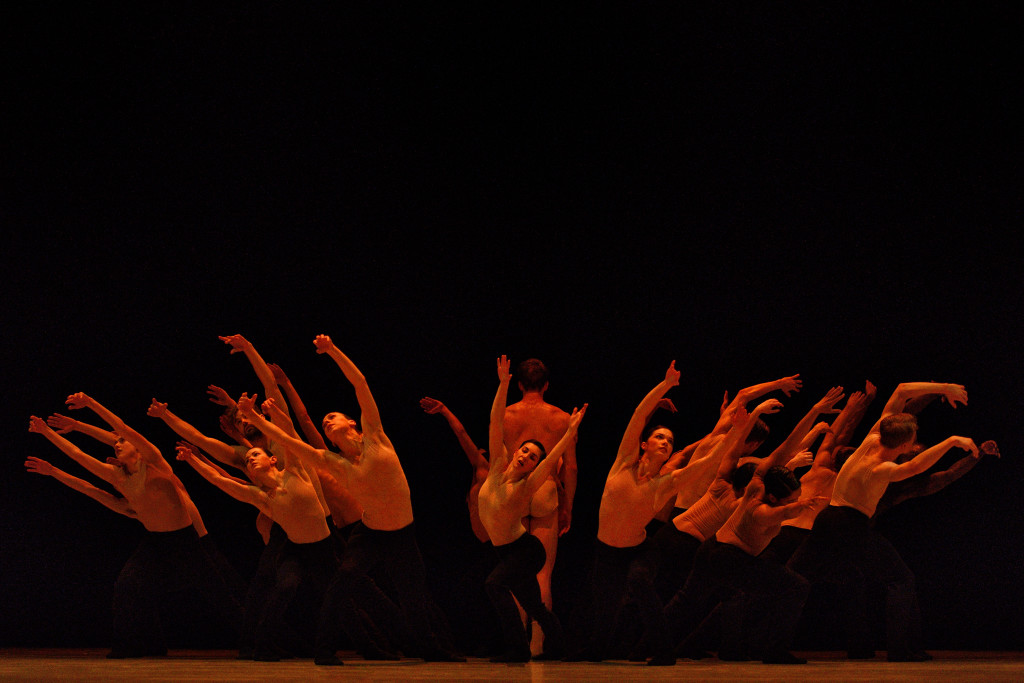
Post-interval the landscape does a 180. This is “Natus”, the wonderful world of celebrations. We have a dancer who narrates us through the preparations behind a grand birthday party. The Narrator starts out of the crowd, picks out an audience member to gently ballroom dance with, before storming the stage as it is slowly illuminated to reveal the set of a birthday party. He starts to animatedly list all the ingredients he needs to buy for the party, and then delves into a monologue about all of the ways in which we celebrate and how we celebrate. The rest of the dancers, now dressed in elegant black trousers and waistcoats, come together with only the music of their claps and loud sighs of anticipation, to blow out the candles of a birthday cake that the Mad Hatter would be envious of.
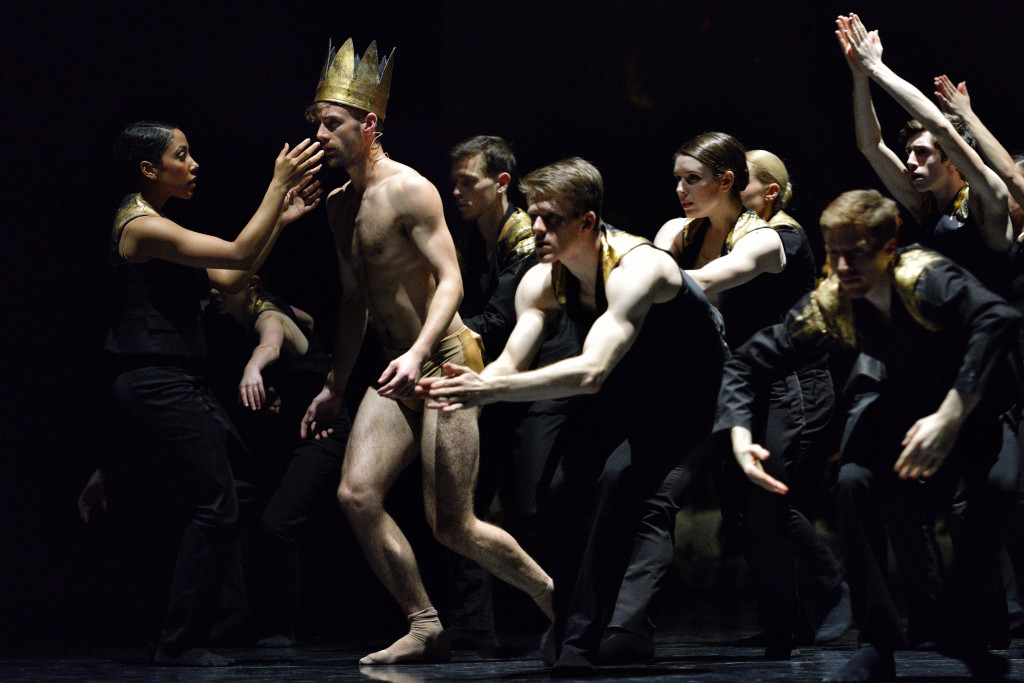
We then witness a male dancer get crowned and walk through a seething crowd of people, in epic slow motion! The sights here are explosively powerful as the individual parts an overly excited sea of people in careful, painfully slow strides. Could these trampled people be the admirers of the person they have crowned? Did they wrongfully put this man on a pedestal only to be crushed in his path to success? Or could this scenario represent the idolatry we experience when we are celebrated? When we get to be the king or queen for a day and the whole world applauds us? Graduations, birthdays, anniversaries, coronations, weddings? Is it hollow or is it meaningful? Walerski’s daring choreography addresses all these nuanced questions with ease. Although the piece is full of beautiful ambiguity, the message that there is no celebration without the Group is quite clear. Celebration brings people together and it is made up of people and their applause.
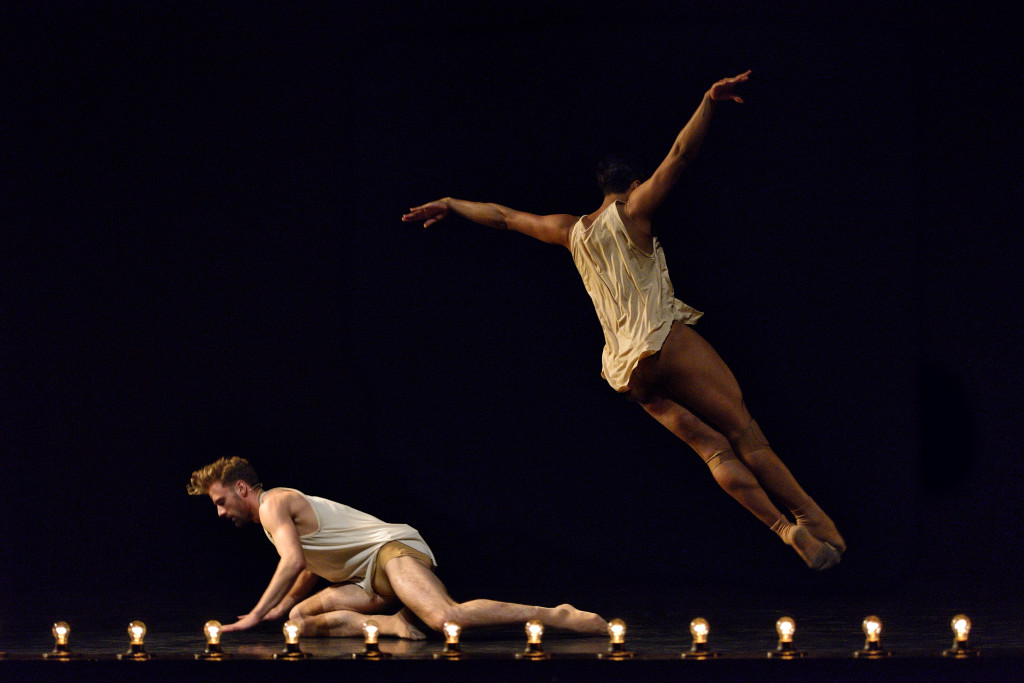
More sombre celebrations follow the coronation piece. There are a series of quiet celebrations between three couples that depict love and perhaps death in carefully placed pools of golden light. Here the dancers are dressed in nude again to signify vulnerability and contemporary choreography takes the spotlight.
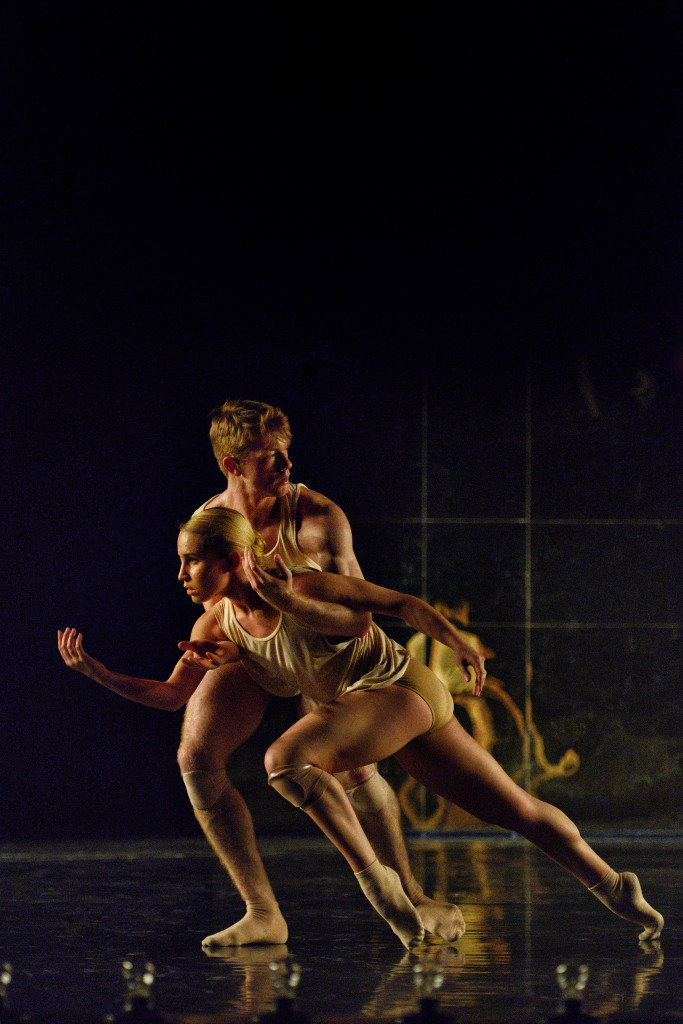
The final part of the show sees the Narrator gaining momentum through the increased power in the imagery of his poetry and through the heightened urgency and volume of his discourse. Sometimes the Narrator gets a little jarring as his hysterics go a bit OTT, but you forgive him instantly as you get swept away by all the ingenious dancing that keeps happening around him.
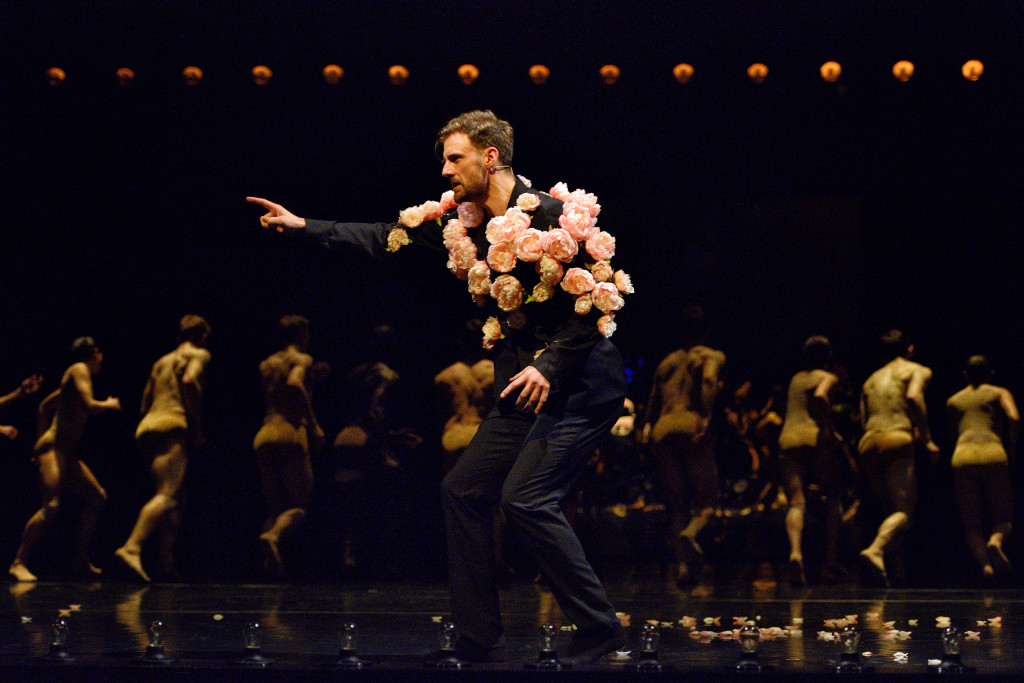
All the dancers take the stage for their final performance, accompanied by a musical score made entirely of energetic, tribal drums. The formations in this piece are beyond breathtaking. The dancers divide themselves up into three staggered lines and perform the same choreography with a one step delay. This rippled dance brings a live dynamism to a piece that already packs quite the aggressive punch as is. Performed thrice in succession this becomes a living dance. As the dancers get faster, harder and more aggressive, the Narrator becomes more frantic in his search for the meaning behind celebrations. The dance finally reaches a crescendo, at which point every ounce of energy in the dancers’ bodies has been shed on the Ballet BC stage- such is the all-consuming force of their dancing and the ingenuity of Walerski’s choreography.
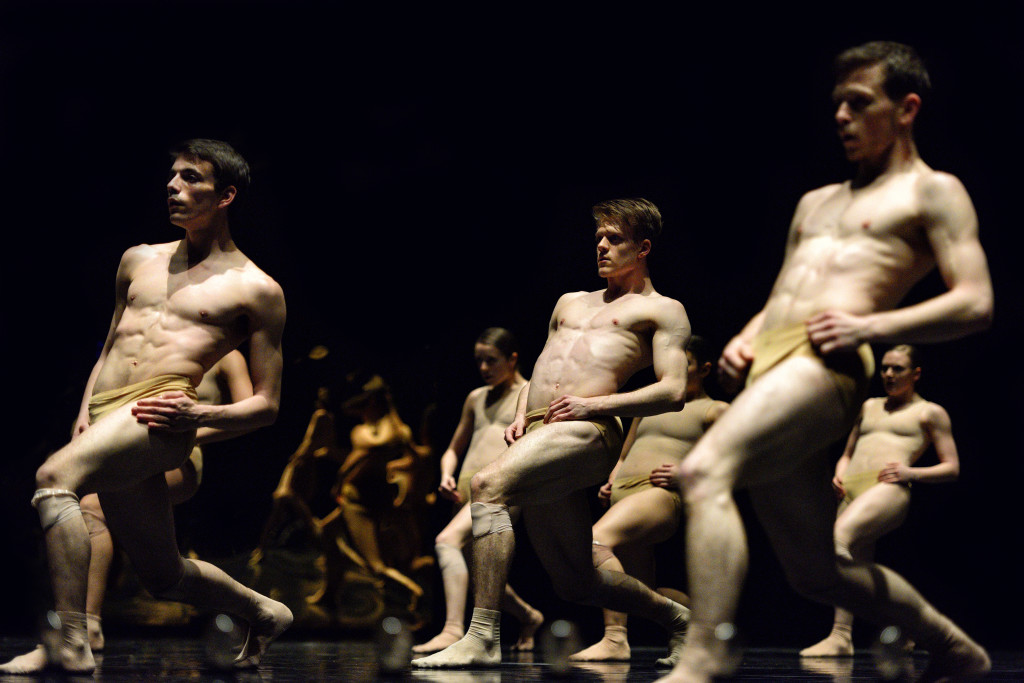
Everything about “Program 2” challenges what I thought knew about Ballet. The music, the set, the choreography, the story, all ask: “but what if things were like this instead of that?” Walerski has produced a masterpiece that isn’t seen, it is experienced. When you watch “Program 2” you may not correctly deduce the exact details of his stories, but Walerski’s choreography is so transcending that your basest instincts will have no trouble deciphering the Ballet’s deeper intents. If “Program 2” visits the city again I would suggest booking a seat in advance and prepare to witness a visual and aural miracle that will open the heart right up in full bloom.
-Prachi Kamble
